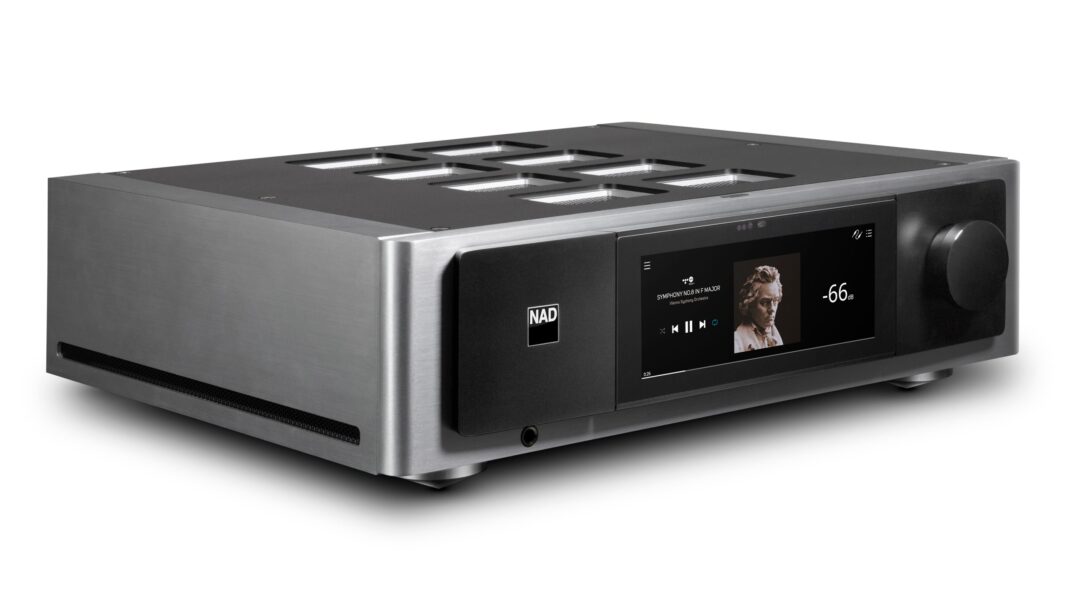The Masters series is NAD’s bid for equipment in the most prestigious class, and while the cheaper models in the hi-fi market come and go with the change of seasons, years can pass between the replacements in the high-end segment. One of them is the integrated amplifier M33. We first wrote about it in connection with the CES trade fair in January this year, but it is only in these weeks that the first factory-ready copies are ready. And our test is in all modesty the first in any English language medium at all.
At will, one can say that the NAD M33 looks like an updated NAD M32 or an enlarged NAD M10. And both will be both right and wrong at the same time.
On the one hand, the M33 has the cabinet and the overall design in common with the M32, which it also replaces in the program. On the other hand, it has the large touch display and the space correction has in common with the M10. It also has a built-in BluOS streaming module, just like the M10. On the M32, it must be purchased as a plug-in module.
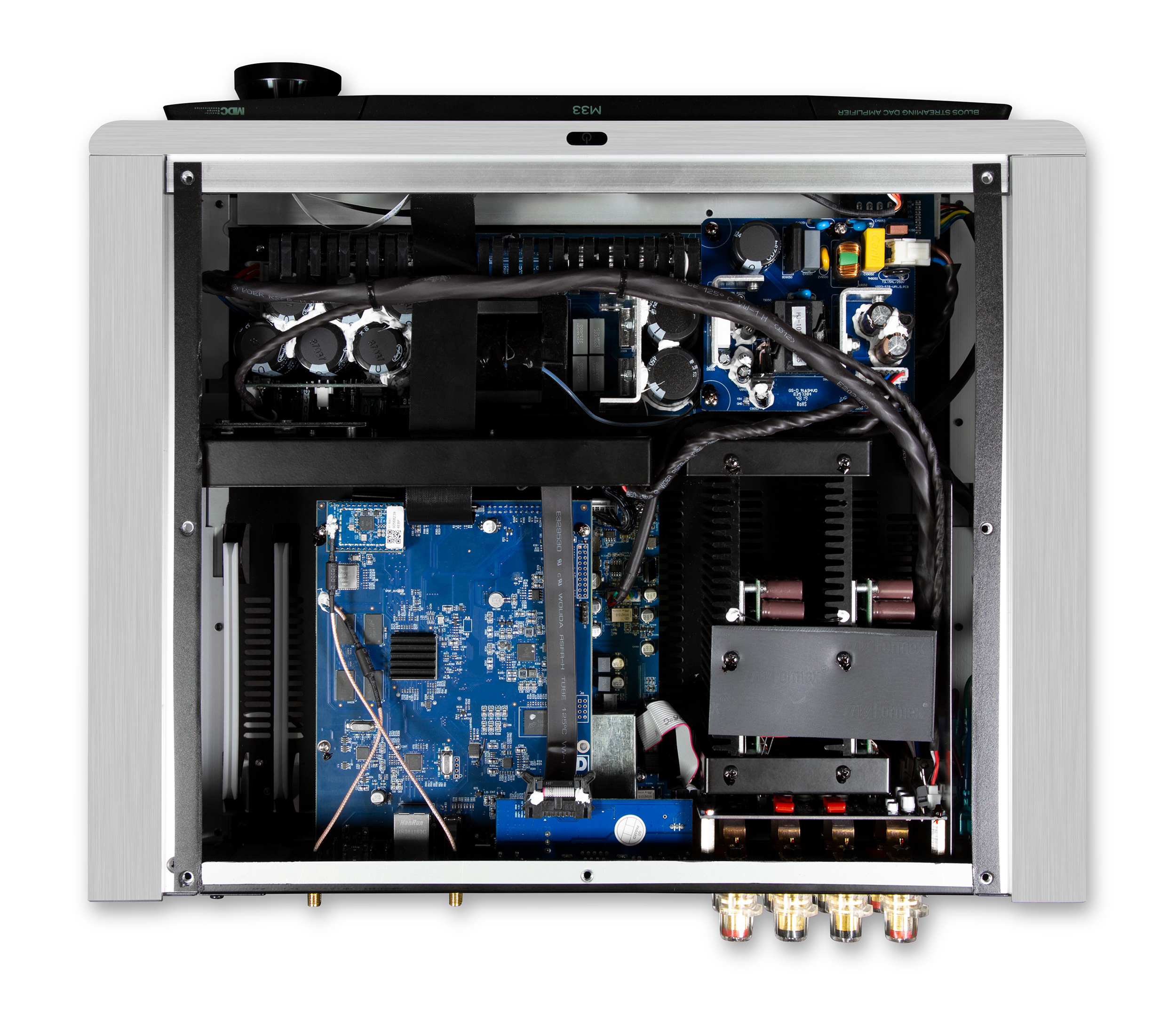
Danish amplifier technology
The amplifier technology, on the other hand, is completely new. Where the M32 was built as a power DAC and was digital from end to end, the M33 is an analog Class D amplifier. It’s M10 too, but M33 is built on some completely newly developed modules – with Danish roots. These are so-called “Eigentakt” modules, developed by Danish Purifi, which has audio pioneer Peter Lyngdorf among the founders.
Describing Eigentakt and Purifi could easily fill an entire article, but it promises, among other things. an immeasurably low distortion – regardless of frequency, power and load.
NAD M33 delivers 200 watts pr. channel in 8 ohms and 380 watts in 4 ohms. So close to a doubling. Should this not be sufficient, the amplifier can be bridged with a switch on the back. Admittedly, NAD has no pure power amplifier version with the same structure at the moment – but I wonder if we can count on it being a matter of time when the bridge switching function exists?
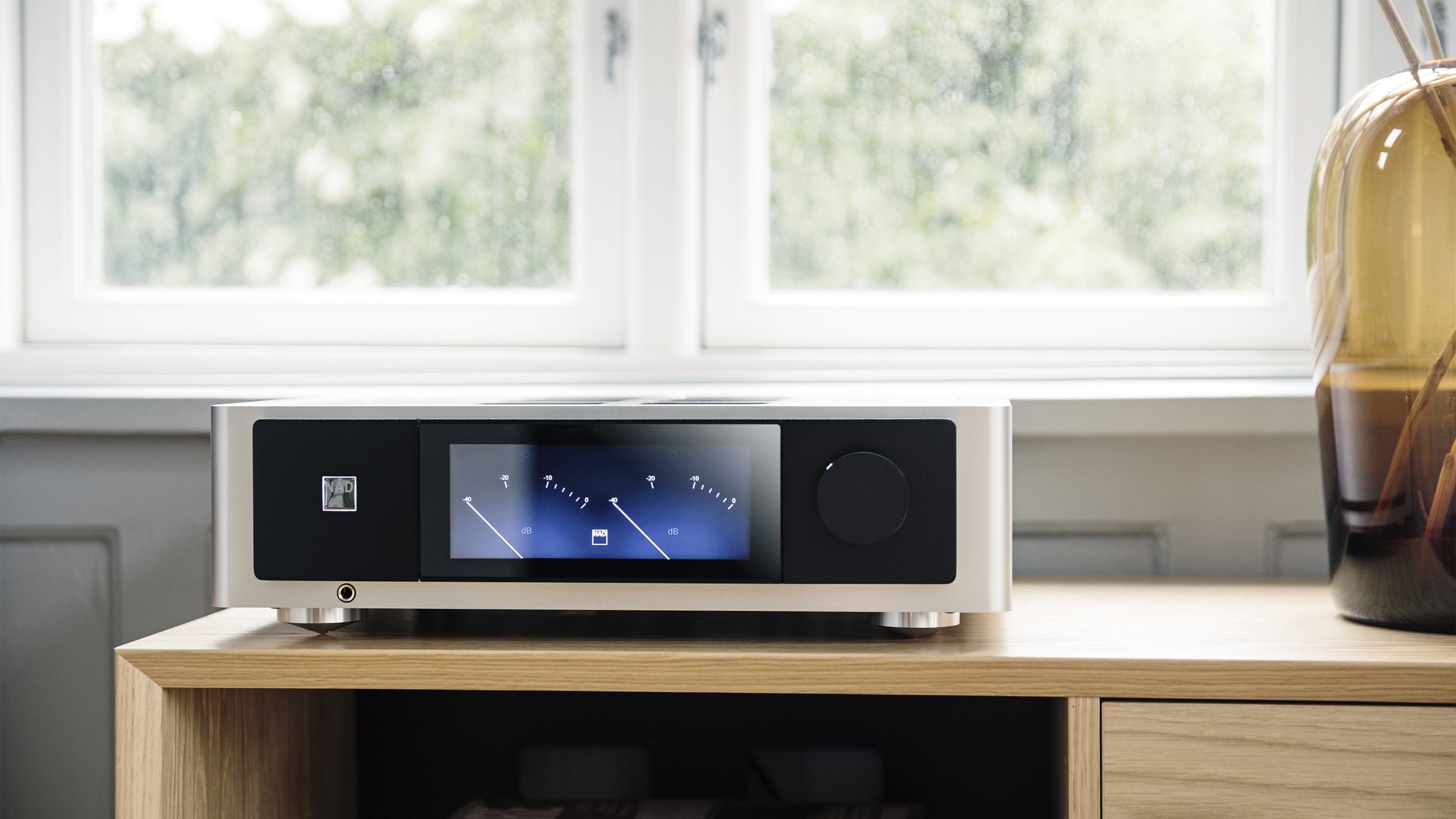
Minimalism
For an integrated amplifier, the number of controls on the faceplate is kept to a minimum: there is only the large volume control. Otherwise, the front is dominated by the 7-inch touch screen. There is also a headphone output. Of course as a quarter-inch jack socket – high-end enthusiasts do not use minijack!
In addition to displaying the selected input and volume, the screen can display album covers when streaming from services that support it. Or you can go full retro with two rocking power meters. In the setup of the amplifier you can decide what should be displayed on the screen and what the input should be called.
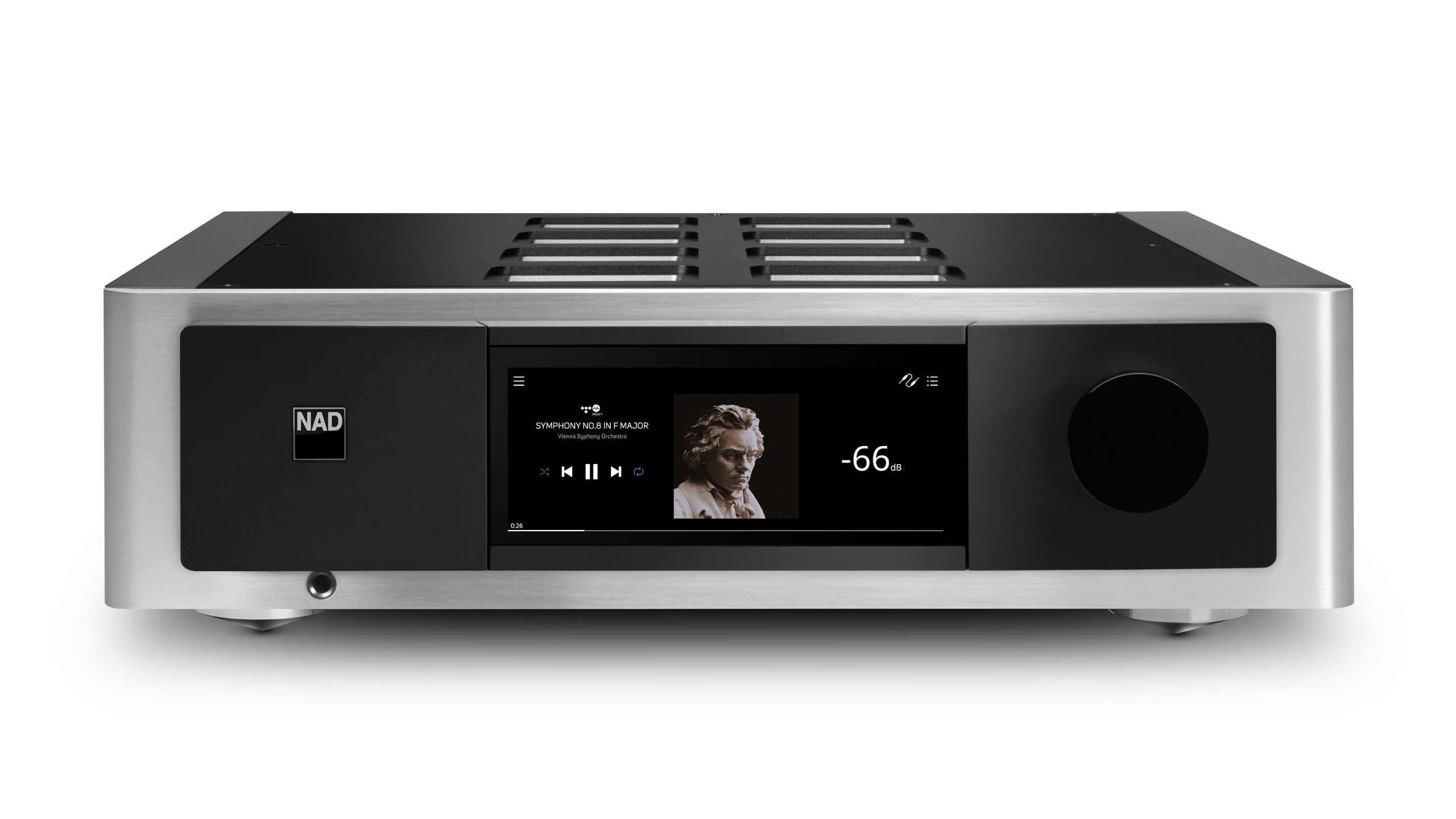
There is a full set of inputs on the M33, especially on the digital side, where you will find two coaxial, two optical TOSLINK inputs and a professional AES / EBU with XLR socket. A single HDMI port makes it easy to get TV sound through the system. And unlike optical connection, the amplifier turns on automatically and switches to the HDMI input.
For armchair listening
The NAD M32 had a “Computer” input where it acted as an external USB sound card. It has been deleted and replaced by a USB port for playing audio files from USB media. This is a good prey, as few people bother to control the amplifier from the PC – but like to play the music collection sitting comfortably in the armchair.
On the analog side, there is a single line input, a balanced ditto and, most importantly, a turntable input. Now for both MM and MC. Beautiful. In the same breath, it can be mentioned that there is a pre-output for a separate power amplifier (eg a hypothetical power version of the M33 if you want to bridge).
If you want to use the NAD M33 for installation or integration in a home cinema, it can work with all common remote control systems via RS-232, 12 V trigger and IR.
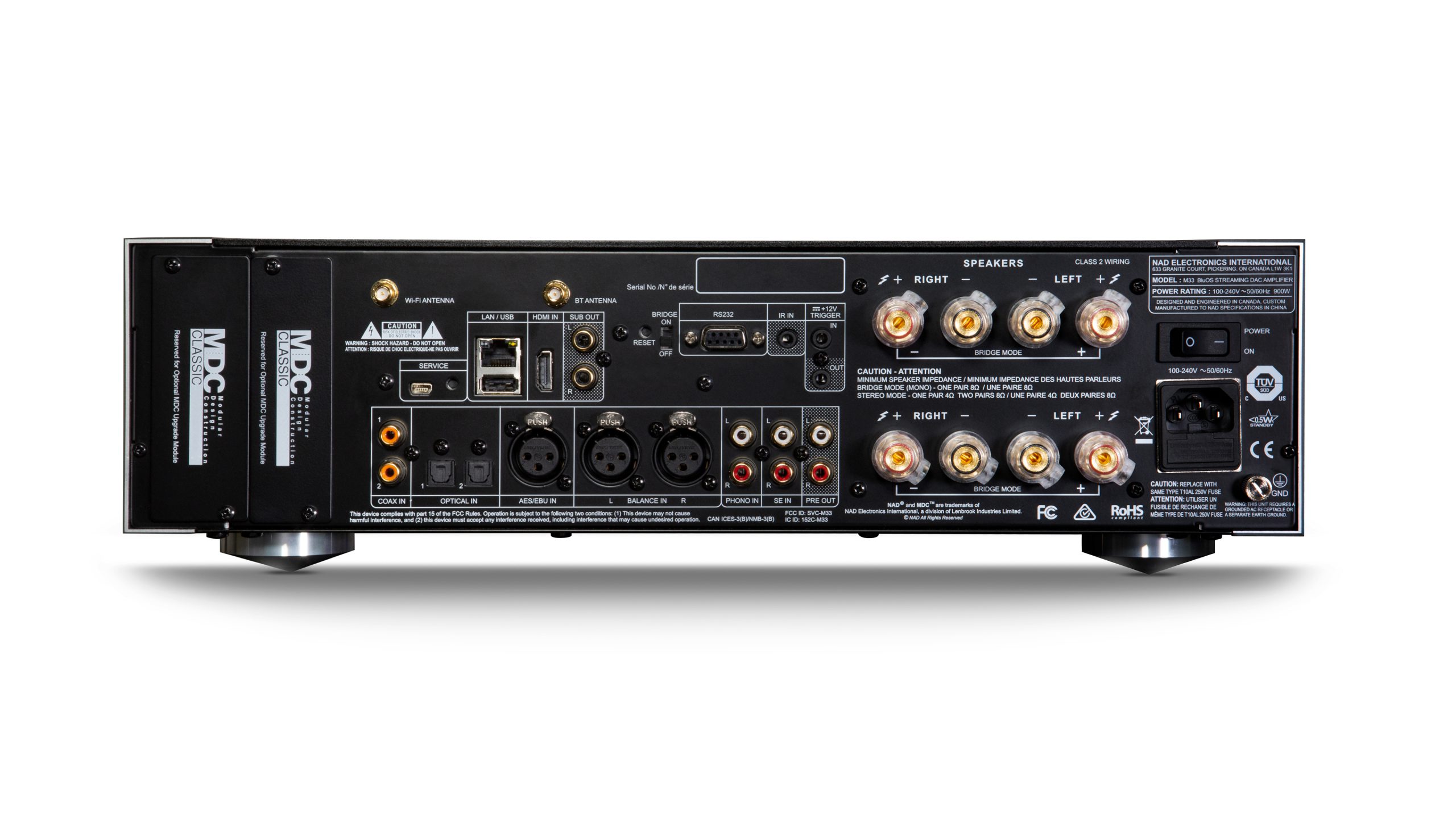
Wireless options
With BluOS built-in, you can stream audio from all relevant streaming services directly from the amplifier. And it can be part of a multi-room system. You can also stream wirelessly from Apple devices with AirPlay 2 or over Bluetooth with aptX HD.
If after this review there should still be an input or function that is missing, the M33, like other models in the series, can be expanded with plug-in modules. Modular Design Construction (MDC) can be mounted in two expansion ports on the back of the amplifier. But with the addition of BluOS and HDMI in the M33, it is now difficult to come up with an unmet need. It should then just be extra HDMI ports.
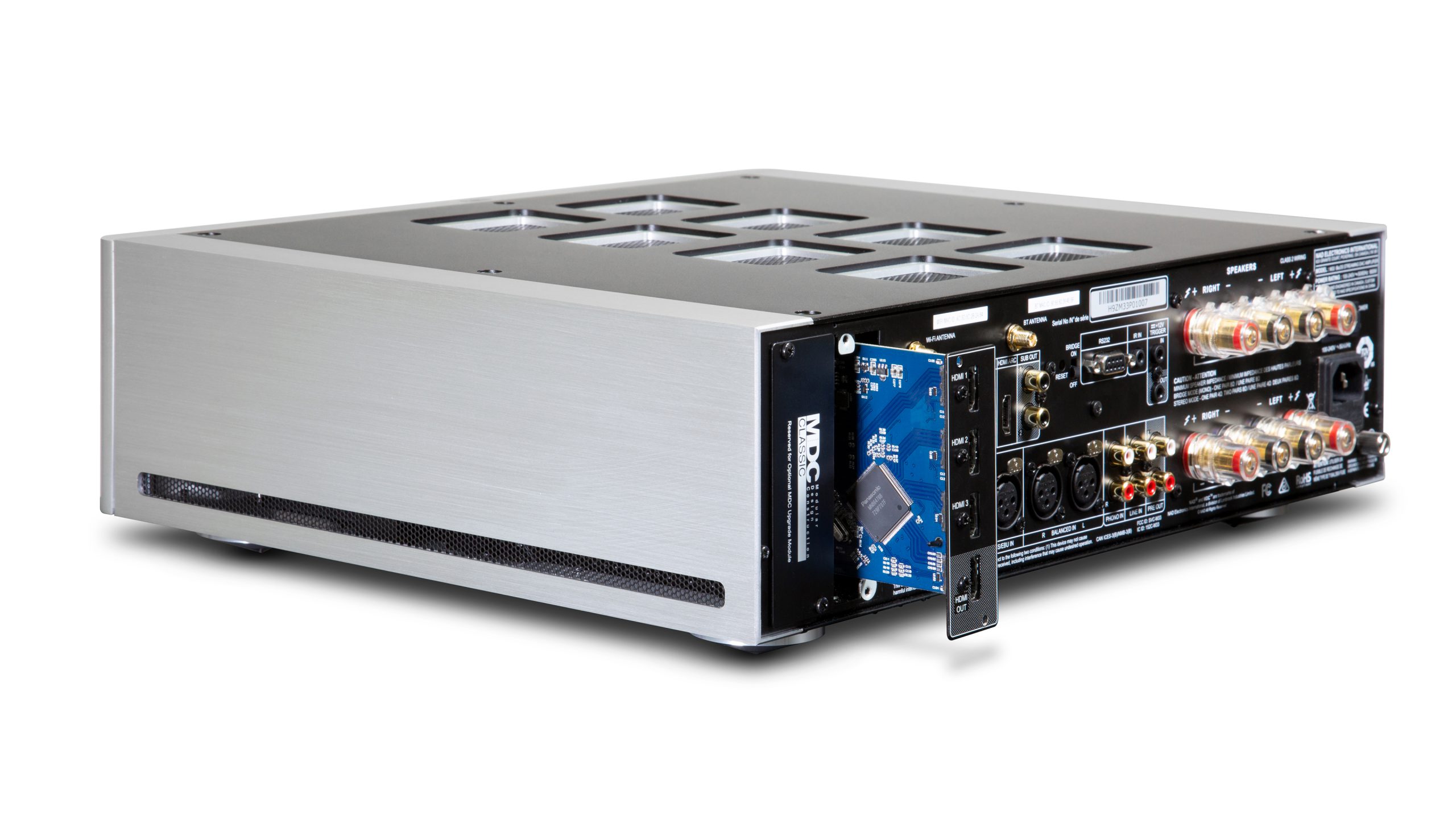
The sound quality
I have been using the predecessor, the NAD M32, as a reference amplifier for several years, and it is obvious to compare the two, as the M33 is the official replacement. To give them an even field to fight on, most of the listening was done without the space correction. And the NAD M33 performs really well, even without digital magic.
One of the things I have loved and praised about the NAD M32 is its crystal clear sound that gives the feeling of listening through a freshly polished window into a totally dust- and smoke-free recording room. But the M33 beats it. And in a most charming way.
At first listen, the M33 may well appear colored in the midrange next to the M32. But closer listening – and multiple shifts between the two – reveals that the M33 is at least as clean in sound, but at the same time more engaging and present.
On the big stage
The space that the M33 draws up is both larger and better defined than that of its predecessor. The M32 tended to emphasise the instruments at the front of the soundscape – and the reverberation around them. The M33 can do that, too, but the experience of listening through a magnifying glass becomes less pronounced, as it is doing a lot of other things at the same time.
Where the M32 might sound a bit withdrawn, but in an analytical way, the M33 is more forward to listen to. The orchestra gets a little more into the living room instead of standing behind the speakers. But the resolution is intact. And it manages to create air around the performers, not only in the foreground, but also further back in the orchestra.
It is clearly heard on e.g. Afenginn’s “Luna Televisio” from the double album Opus. Here, strange Latin choral singing is mixed with percussion that comes from everywhere in a large room.
And then M33 is fun! Class D amplifiers have a – more or less deserved – reputation for being uninvolved to listen to. That’s not the case here! First, it has a raw power in the bass that really sets rock and all rhythmic music in motion.
I have never perceived the M32 as tame. But emotional it bloody well wasn’t either! There m33 is an entirely different (party) animal. Without it becoming aggressive or inaccurate for that reason. It just likes to have a fun time. And it holds the speakers in an iron grip that forces them to participate in the antics.
There is no lack of power or dynamism. Although the Telarc version of “The Bandit Gallop” does not play with the same fear of the next whiplash as on the Musical Fidelity M8xi.
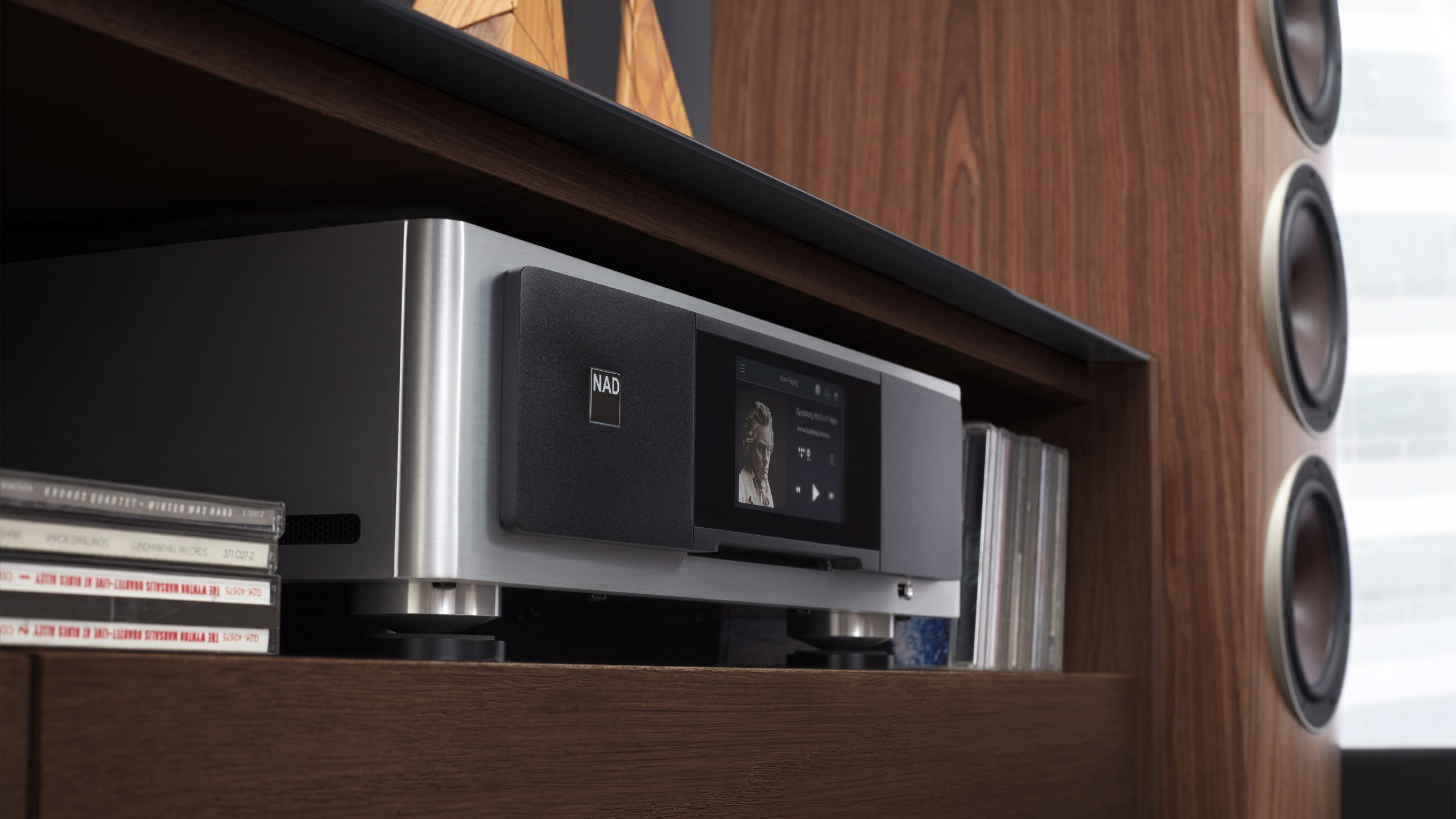
Another characteristic that can make the M33 appear colored next to its predecessor is the lower midrange range, which attracts far more attention in the soundscape. Again, however, it turns out to be a virtue rather than a sin. Because it makes singers appear with the body and personality that could well be lacking on the M32, which at will can be called either sober or buttoned up.
The fact is, I could not stop myself from digging up more and more vocal tracks to experience it. On Phil Collins’ “In the Air Tonight” from the solo breakthrough Face Value, I was both impressed by the quality of the voice – and how well ambience is presented on the track. As an old Genesis fan, I have heard that number countless times, but there are still details to pick up – if the equipment is up to it.
“Secret” room correction
Like the M10 mini-system, the NAD M33 has a built-in space correction in the form of Dirac Live. Thus, it adds to the range of components that take care of the most critical part of the listening chain: the living room. Coloration from the listening room affects the sound more than amplifier, speakers and for that matter cables.
However, Dirac is not to be found anywhere in the menu system on the M33. To access the room correction, first download the app (PC, Mac, iOS and Android) and select NAD during setup. Then M33 automatically appears in the app, as long as you are on the same network. And when the correction is complete, Dirac suddenly appears in the amplifier’s menu system.
Fortunately, the procedure is explained in a guide that is in the box – if you do not overlook it in the excitement of getting the amplifier set up.
Are you selfish or social?
The correction is made using a measuring microphone of the same kind, which comes with better surround receivers. You can choose between letting the correction cover an entire sofa or just the razor-sharp sweet spot in the good chair.
It takes about ten minutes to measure the room with Dirac Live. A total of nine measuring points must be measured in the space around the listening position. A moment later, the program has calculated a correction curve, which is stored in the device itself. You can save five settings at a time. You do not have to settle for the program’s proposals. For example, if you want a more prevalent bass, you can by drawing with your finger on the mobile screen adjust on the result curve before saving the correction in the amplifier.
The room correction not only works with the built-in amplifier, but also corrects on one or more subwoofers. Something that should make the ever-messy integration between main speakers and subwoofers easier.
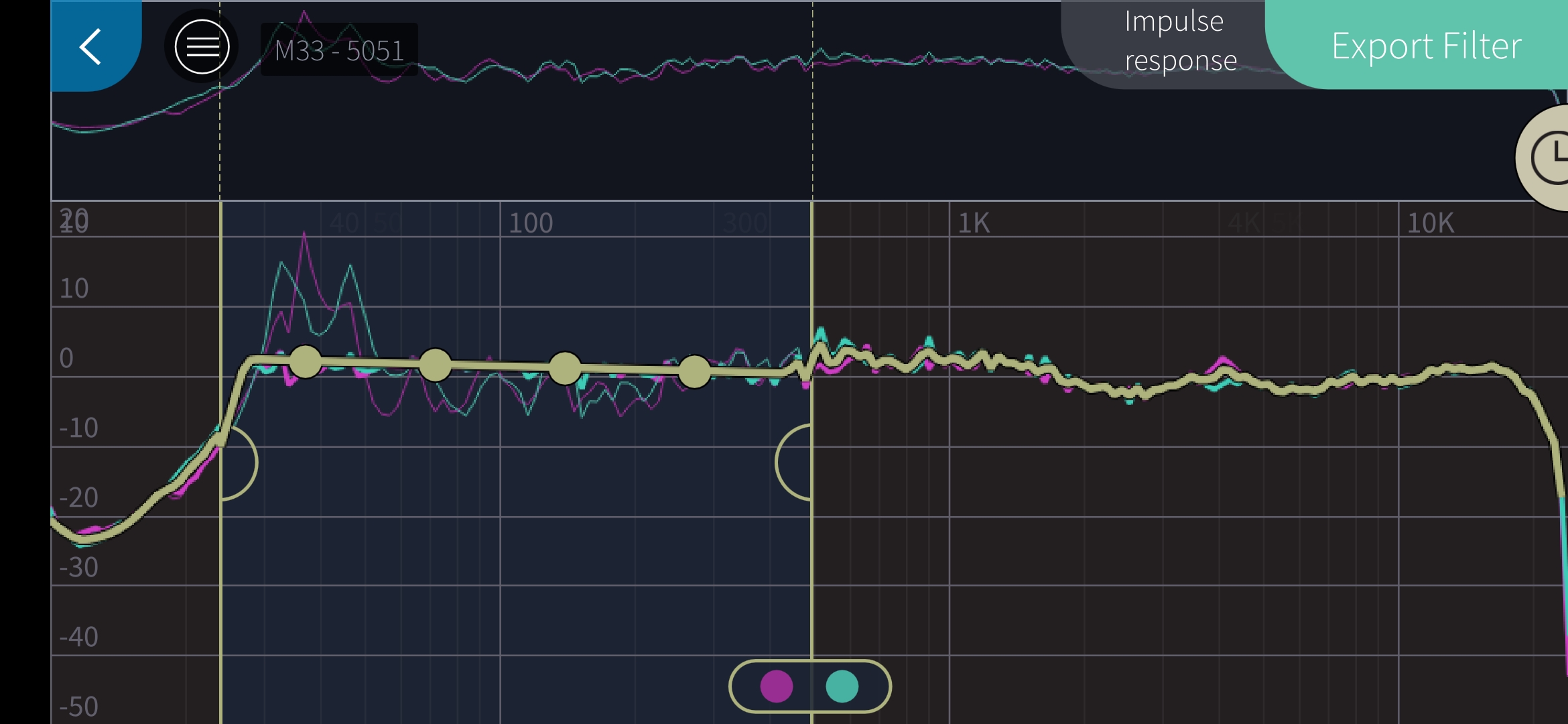
Only a “light version”
The version of Dirac implemented in the NAD M33 is only the light version, which operates up to 500 Hz. If you want room correction in the entire frequency range, it costs 99 dollars to upgrade to the full version.
It can be argued that it is precisely in the low spectrum area that the need for and effect of room correction is greatest. And this area is covered by the Light Edition. But you can also argue that it seems a bit cheap on NADs side that you do not get the full version included in the price, considering the amount of money you must part with to take it home. Even if it meant that the retail price of the M33 was increased with the same 99 dollars.
Cheap or not, room correction is still a clear advantage. Any bumps in the frequency response in the bass (and all rooms have bumps in the bass!) Are tamed. It not only helps the bass reproduction, but also makes it possible to hear details in the midrange range that was previously muted. The effect is not as overwhelming as on the Lyngdorf TDAI-3400, but it still shows that room correction can make the difference between good sound and really good sound.
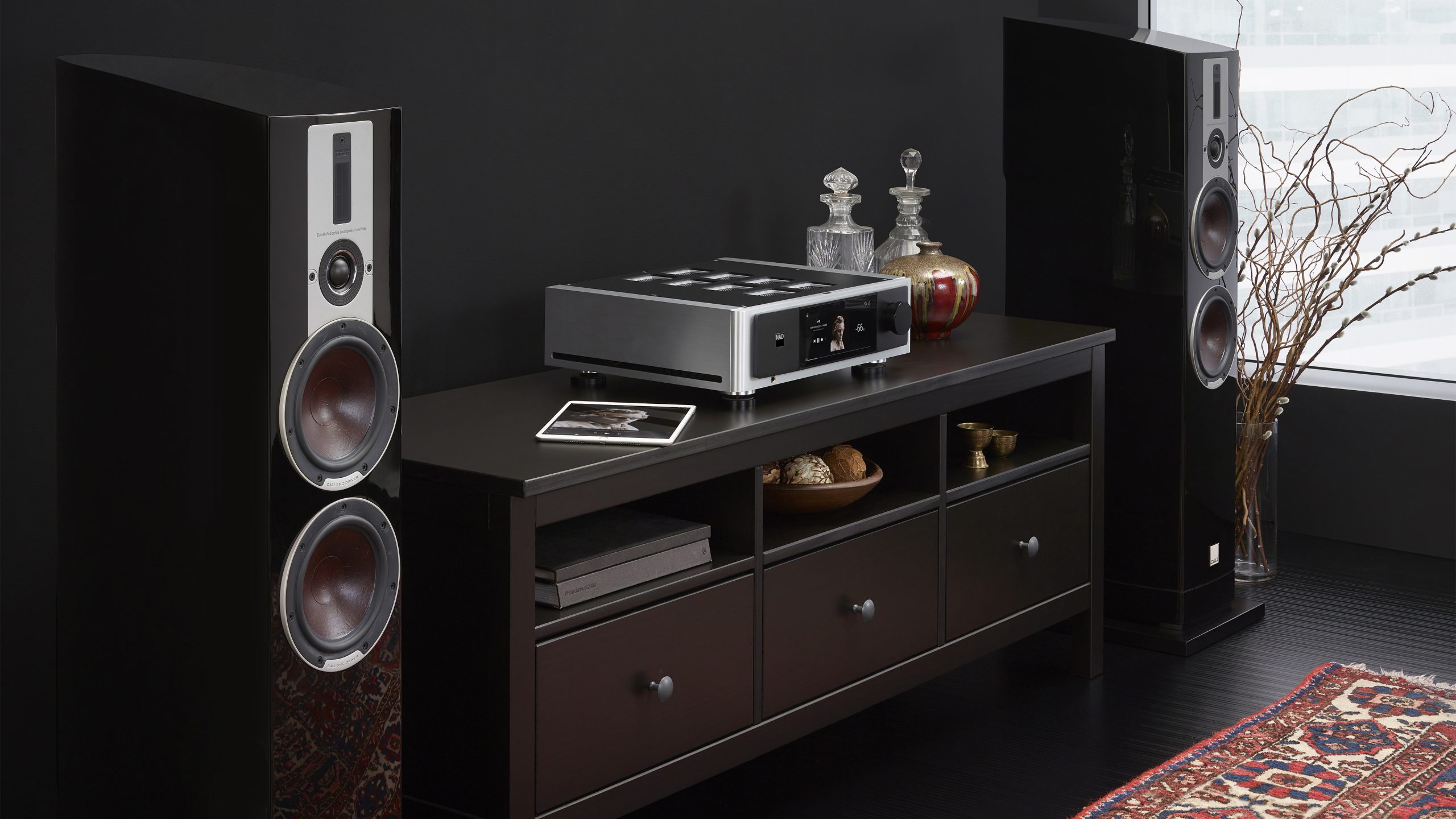
Conclusion
The NAD M33 is not just an improvement on an already successful high-end amplifier. In practice, this is a completely new product. Both in terms of technology, functionality and sound.
With the addition of HDMI as well as built-in BluOS streaming and Bluetooth in (near) CD quality thanks to aptX HD, most people will have all the sources they need. At the same time, the sound quality has increased more than just bit. And that was from a really high starting point. Finally – and this is important – M33 is fun company. It plays with a drive and an enthusiasm that the predecessor lacked in hindsight. The room correction is the cherry on top of the cake.
Unfortunately, it also costs a hell of a lot of money, but that’s the price of high-end. And one can easily find competitors who provide far fewer features for a much steeper price.

We think
Genuine high-end, fun to listen to and lots of power. Built-in BluOS streaming and space correction. Significantly more expensive than its predecessor. You will have to pay extra for the full version of the room correction.
3699 €
Specifications
- Output power: 2 x 200 W in 8 ohms / 2 x 380 W in 4 ohms
- Output power, bridged: 1 x 700 W in 8 ohms
- Digital inputs: 1 x AES / EBU (XLR), 2 x coaxial, 2 x optical (TOSLINK), USB Type A, HDMI, Ethernet
- Analog inputs: Line in (stereo RCA), balanced (stereo XLR), turntable (MM / MC) (stereo RCA)
- Outputs: 2 sets of speakers (banana / screw terminals), pre out (stereo RCA), subwoofer (stereo RCA), headphones
- Wireless: AirPlay 2, Bluetooth 5 (aptX HD, bidirectional), Wi-Fi 5
- Resolution: 24 bit / 96 kHz (optical), 24 bit / 192 kHz (coaxial, USB)
- Dimensions and weight: 43.5 x 13.3 x 39.6 cm / 9.7 kg
- Web: hifiklubben.com
